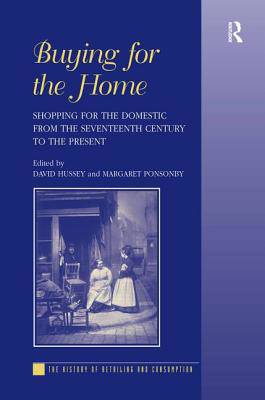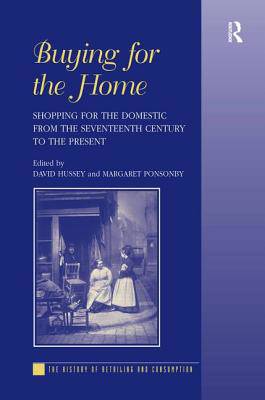
- Retrait gratuit dans votre magasin Club
- 7.000.000 titres dans notre catalogue
- Payer en toute sécurité
- Toujours un magasin près de chez vous
- Retrait gratuit dans votre magasin Club
- 7.000.0000 titres dans notre catalogue
- Payer en toute sécurité
- Toujours un magasin près de chez vous
Buying for the Home
Shopping for the Domestic from the Seventeenth Century to the Present
Margaret Ponsonby
290,45 €
+ 580 points
Format
Description
Buying for the Home is a book about the experiences and also the polarities of shopping and the home. It analyses the ways in which the agencies and discourses of the retail environment mesh with the processes of physical and imaginative re-creation that constitute the domestic space, teasing out the negotiations and interactions that mediate this key arena. The study examines how the strategies of retailers were both arbitrated by and negotiated through the actions and desires of the homemaker as consumer. Drawing on the recent CHORD (Centre for the History of Retail and Distribution) colloquium on shopping and the domestic environment and including two specially commissioned pieces, the book draws on a wide selection of interdisciplinary work from established scholars and new researchers. Organised around four key themes - retail arenas and the everyday; identity and lifestyle; fashioning domestic space; and cultural practice - the ten case studies cover a range of cultural encounters and locations from the seventeenth to the late twentieth century. Through these interdisciplinary but linked case studies, Buying for the Home forces us to consider the fractured space that existed between the world of goods and the middle- and working-class home and in so doing interrogate how middle-class and plebeian homemakers view, imagine and ultimately occupy their domestic spaces in early-modern, modern and post-modern society.
Spécifications
Parties prenantes
- Auteur(s) :
- Editeur:
Contenu
- Nombre de pages :
- 236
- Langue:
- Anglais
- Collection :
Caractéristiques
- EAN:
- 9780754658078
- Date de parution :
- 22-07-08
- Format:
- Livre relié
- Format numérique:
- Genaaid
- Dimensions :
- 156 mm x 234 mm
- Poids :
- 512 g

Les avis
Nous publions uniquement les avis qui respectent les conditions requises. Consultez nos conditions pour les avis.






